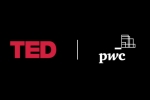Market risk, geopolitical risk, supply chain disruptions, regulatory compliance, cyber threats—these are some of the highest-priority risks impacting the strategies and operations of a wide array of industries today, according to PwC’s 2022 Global Risk Survey. Such risks are tightly interconnected, which means that one can amplify others, and the impacts can be far-reaching. For example, what may start as a technology breach can quickly pose huge operational, financial and reputational risk. Given this interconnectedness, C-suite leaders need to develop a panoramic view of their risk-management capabilities that go beyond traditional analysis. Those capabilities should include regular risk-interconnectivity and -mitigation assessments, as well as robust business-continuity and crisis-response plans. Not all risk exposures can be completely mitigated or avoided, but leaders can strengthen their company’s resilience by encouraging better coordination between risk managers and risk owners. They should also create actionable, real-time risk intelligence using integrated data analytics, as well as governance, risk management, and compliance technologies.

























